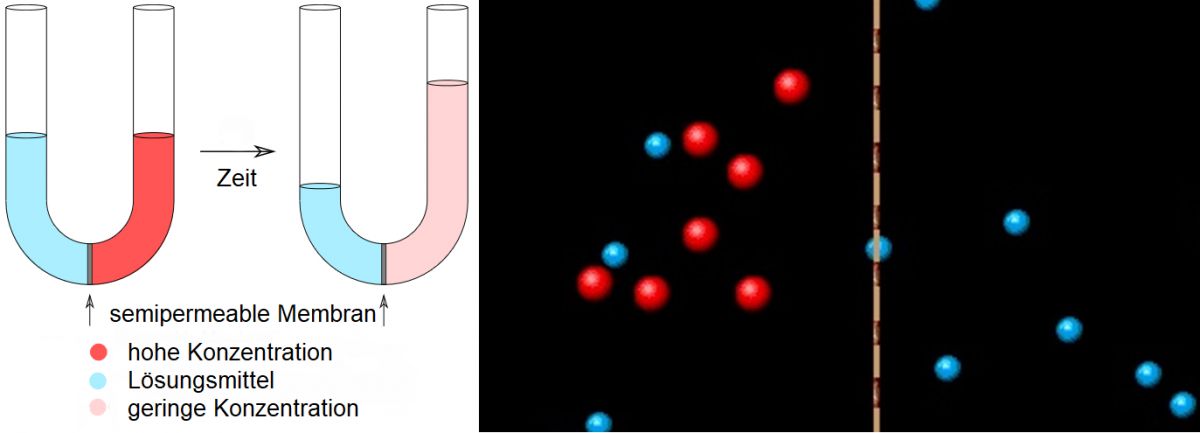Osmosis
Osmosis (ancient Greek ōsmós = penetration, propulsion) is the flow of particles through a separating layer. This causes liquid to move through a semi-permeable partition, such as cell walls in living organisms, which separates two liquids of different concentrations. Osmosis is important in metabolism. It was discovered in 1874 by the Danish chemist Jacobus Hoff (1852-1911). This partition (also known as a diaphragm) only allows certain molecules (e.g. water) to pass through, but not the dissolved substance (e.g. sugar). The water penetrates in the direction of the more concentrated solution. Osmosis is also an essential process in nature and also occurs in connection with viticulture, where it plays an important role in the transport of water and nutrients in grapevines.

An example of osmosis: If a container-1 with concentrated solution (e.g. sugar water) is placed in a container-2 with pure water, the water molecules move into container-1.
Mode of action
The water molecules are "sucked in" because there are fewer water molecules there. The level in container 1 rises until the osmotic pressure in container 2 is equal to the hydrostatic pressure in container 1. With pure liquids such as water and alcohol, the flow of molecules can take place in both directions, depending on...
Voices of our members

The Wine lexicon helps me to keep up to date and refresh my knowledge. Thank you for this Lexicon that will never end in terms of topicality! That's what makes it so exciting to come back often.
Thorsten Rahn
Restaurantleiter, Sommelier, Weindozent und Autor; Dresden